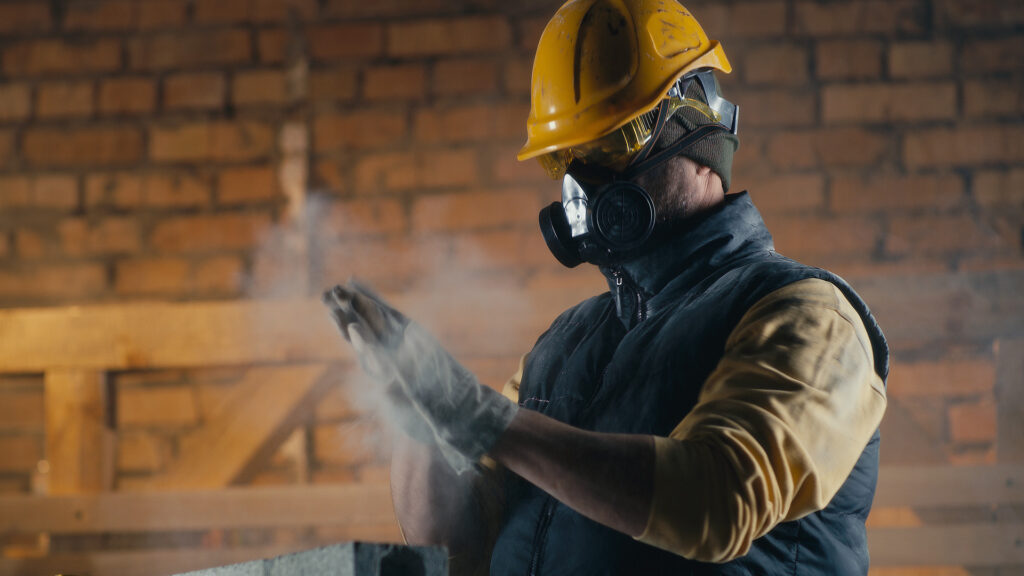Lead might be great for batteries, but it’s absolutely terrible for your lungs, brain, and well, everything else. While it’s been around forever, that doesn’t mean it gets a free pass at work. Let’s break down what makes lead so dangerous, where it shows up, and how to keep your team from turning into a case study in “What Not to Inhale.”
Let’s get one thing straight, lead exposure doesn’t just happen in chemistry class.
- Construction Mayhem: Lead-based paint in older buildings and those ancient pipes are lurking hazards.
- Manufacturing Chaos: Battery production, stained glass, ceramics, even some pigments? All guilty of lead crimes.
- Dust Drama: Lead doesn’t need an invitation, it just floats in on air currents or settles in soil like it owns the place.
- Imported Mayhem: Some cosmetics and imported toys still pull the lead card. Yikes.
Who’s most at risk? Spoiler alert: It’s not just people wearing hard hats.
- Demo Crews: Tearing down buildings caked in lead-based history.
- Welders and Metalheads: Melting or cutting lead parts is like inviting fumes to your lungs.
- Battery Builders: Handling lead-acid batteries isn’t just shocking, it’s toxic too.
Let’s not forget the ripple effect. Pregnant workers, children at home, or anyone with long-term exposure? The risk doesn’t stay on site.
Lead’s game plan? Sneak in, stay forever, and mess you up from the inside out.
- Brain Drain: Cognitive decline, memory loss, and if you’re real unlucky, seizures.
- Heartbreaker: High blood pressure and a higher chance of heart disease.
- Baby Trouble: Reproductive issues and pregnancy complications.
- Organ Breakdown: Long-term damage to kidneys and liver.
Even small amounts of lead can snowball into serious health problems. If you’re feeling off, don’t tough it out, report it.
The rules are strict, and for good reason. Here’s what OSHA and EPA say about lead exposure.
- OSHA Exposure Limits: 50 micrograms per cubic meter over an 8-hour shift. That’s your cap. Hit it, and action must be taken.
- Medical Monitoring: If you cross 30 micrograms per cubic meter, regular blood tests are required. Cross 40? You’re on the medical watchlist.
- EPA Oversight: They’re all about clean air, water, and soil, especially with their Lead and Copper Rule for drinking water.
If lead’s the villain, then prevention is your superhero origin story.
PPE Like You Mean It
- Respirators that actually fit your face.
- Coveralls and gloves that don’t just look cool, but work.
- Eye protection so you don’t blink your way into exposure.
Clean Freak Energy
- Wash up before eating like you’re prepping for surgery.
- Use HEPA vacuums, not brooms, unless you want to redecorate with dust.
- Separate changing rooms to avoid taking lead home in your hoodie.
Engineering Magic
- Ventilation that actually does something.
- Enclosures to trap lead particles where they belong, not in your lungs.
Talk It Out
Training keeps people sharp. Remind your crew that safety isn’t optional, and retaliation for speaking up is a no-go.
Let’s not stop here, silica’s another silent threat you need to outsmart.
Lead isn’t the only danger in the dust. Silica can be just as sneaky and deadly, especially in similar work environments. Learn how to stay one step ahead with our Silica Exposure: Prevention and Response Training Course.
Expand your knowledge with our Lead Exposure Prevention and Response Training Course.
Protect your people and your reputation by knowing how to detect, prevent, and respond to lead exposure before it becomes a crisis. Enroll in the Lead Exposure: Prevention and Response Training Course to get real solutions that keep your workplace safe and compliant.
References

